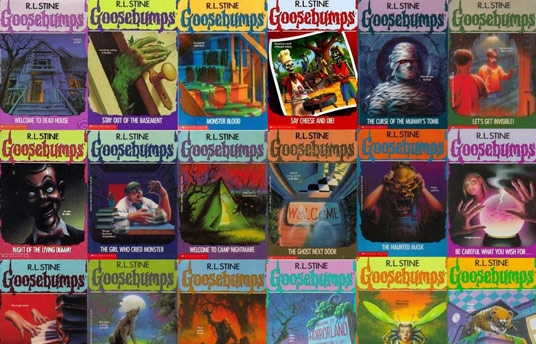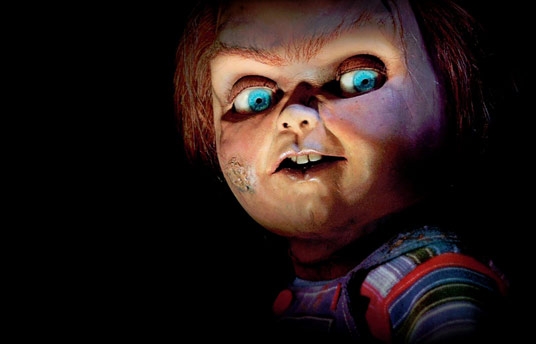لماذا نشاهد أفلام الرعب
04 مارس 2013

بقلم ألكسندر وود
ترجمة عروبة حسين_
معظمنا جرّب المرح قليلاً عبر الاختباء في خزانة وإصدار صوت أنين خافت ثم الظهور فجأة لإخافة أحدهم. هناك سبب ما يدعونا للاستمتاع، والاستمتاع جداً بإخافة الآخرين والشعور بالخوف. إن أفلام الرعب الأولى كـ كابينة الدكتور كاليجاري أو نوسفيراتو أو الأكثر حداثةً كـ نشاط خارق اجتذبتنا ولا تزال بالآلاف إلى صالات العرض. لماذا نحب أن نشعر بالخوف الشديد؟ سؤال بحثه العديد من علماء النفس، ونحن أيضاً سوف نحاول الاضاءة قليلاً على بعض الأمور لعلّنا نعرف سبب هذا الهوس الغامض.

مع قصص الرعب التي اعتدنا قراءتها في صغرنا يبدأ كل شيء. مع سلسلة قصص آر.أل ستاين صرخة الرعب مثلاً أو “قصيدة الغراب()”: http://en.wikipedia.org/wiki/The_Raven للشاعر الأمريكي إدغار ألن بو. ربما أيضاً روى لك أحد والديك قصة “الرجل ذو اليد الذهبية”. منذ الطفولة تنشأ معنا الرغبة بالشعور بالخوف، منذ بداية تعرّضنا لسماع القصص الشعبية واحتفالنا بأعياد البربارة وممارسة لعبة بلودي ماري .

وقد وجد علماء النفس في دراسة أن ما يشعر به المشاهد في أفلام الرعب هو نفسه ما قد يشعر به لو كان يواجه المواقف التي يشاهدها في الفيلم، على أرض الواقع. فإذا التقيت مثلاً وأنت في طريق العودة إلى المنزل قاتلاً مهووساً يحمل منشاراً كهربائياً، ستشعر بالخوف ذاته الذي تختبره عند مشاهدتك له في فيلم. ولاحظت الدراسات أن دقات قلب المشاهد أمام فيلم رعب ترتفع 15 دقة في الدقيقة الواحدة، ويزيد تعرّق اليدين، وتهبط حرارة الجلد، وتتوتّر العضلات ويرتفع ضغط دمه.
وتلحظ الدراسة أن دماغ الانسان لم يعتد بعد على التكنولوجيا السينمائية الجديدة. ما زلنا غير قادرين على إقناع أنفسنا بأن الصور التي نراها على الشاشة غير حقيقية، فيتجاوب دماغنا معها على أنها حقيقية. هناك جزء في الدماغ يدعى “اللوزة الدماغية” وهو المسؤول عن إدراك مشاعر الخوف والقلق و نظرية الكر والفر أي الشعور بضرورة الدفاع عن أنفسنا أو الفرار مما يخيفنا.
حين يتلقى الدماغ إشارات الخطر فإنه يطلق هورمون الأدرينالين والنورادرينالين والكورتيزول- وكل تلك الهورمونات مسؤولة عما نشعر به حين نمارس رياضة القفز بالمظلات أو نقود بسرعة.

وحين نذهب لشراء تذكرة لفيلم رعب، فإننا نعرف مسبقاً أن ما ينتظرنا سيكون مخيفاً. ونتيجة إدراكنا الواعي بأن ما سنراه لن يشكّل أي خطر حقيقي، يصبح بإمكاننا الاستمتاع بالخوف. لكن أفلام الرعب ليست مجرّد مصدر للترفيه والأوقات الممتعة. هناك دراسات بيّنت أنها قد تتسبّب بأضرار مزمنة. فقد أورد الباحثون أن 60 بالمائة من المشاهدين أبلغوا عن أن ثمة أفلام مخيفة شاهدوها قبل سن الـ 14، تسبّبت لهم باضطرابات ونوبات رعب خلال نومهم أو يقظتهم.
نصيحة… قبل أن تتوجه إلى السينما برفقة طفل أو صديق ذو قلب ضعيف، يجب أن تأخذ بعين الاعتبار كل ذلك. لكن معظم عشّاق أفلام الرعب لن يكترثوا بنتائج الدراسة التي ذكرناها وسيستمرون بمتابعة أحدث الاصدارات السينمائية المرعبة. أما أصحاب القلوب الضعيفة، فحذاري من عدم الاستماع إلى النصائح، وإلا سيحدث أنكم ستستيقظون ليلاً على أصوات حشرجات تناديكم بأسمائكم.